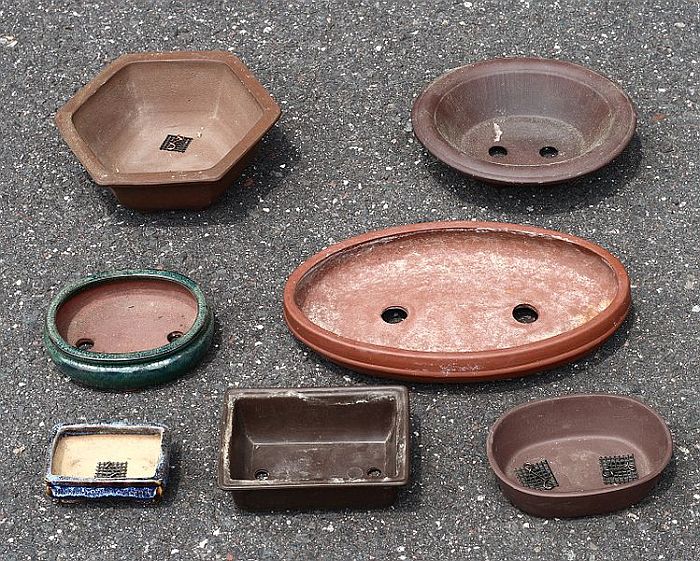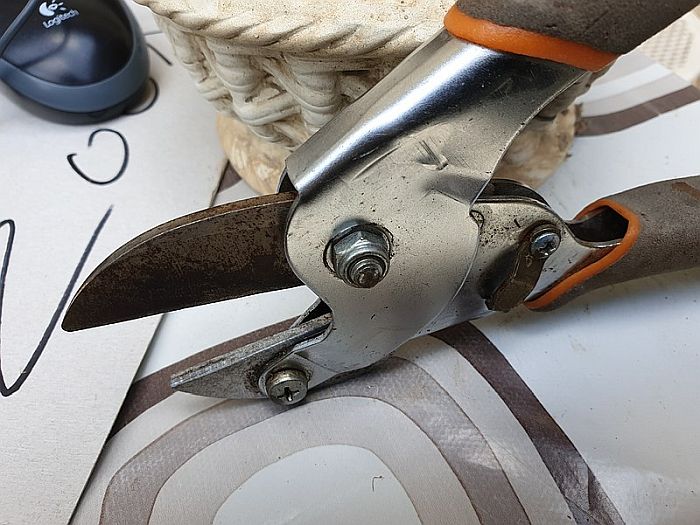How to care for a bonsai tree: Water your tree when the soil feels dry about a centimeter down. If growing your tree indoors, you can give it a balanced liquid fertilizer, year-round. Prune the upper and outer parts of the plant to make its growth lower and more compact.
Wondering how to take care of a bonsai tree? If so, you’re in the right place.
Bonsai trees can be trickier to care for than other plants because you don’t just let them grow as they please. Keeping them small takes careful potting and pruning, and each species has its own requirements.
In this article, I’ll focus on indoor bonsai care.
Contents
How To Take Care Of a Bonsai Tree Indoors
Get The Right Plant

According to Bonsai Empire, most bonsai trees belong outdoors. Temperate trees, they explain, need winter to enter a dormancy period, during which they complete a growth cycle and after which, they start a new one.
Only tropical and subtropical varieties are suitable for growing indoors. Bonsai Empire names the ficus bonsai as a beginner-friendly indoor plant. Other indoor-friendly varieties they name are:
- Crassula (Jade)
- Carmona (Fukien Tea)
- Schefflera Arboricola (Hawaiian Umbrella)
- Sageretia (Sweet Plum)
Keep in mind that tropical and subtropical species have different temperature preferences: Bonsai Empire explains that tropical species thrive year-round at room temperature, whereas subtropical species do best with much colder winter seasons.
Need help choosing what to grow? You may feel inspired by one of these 25 little trees.
Use TENPERCENT code to get 10% off when you purchase 3 or more live trees from Bonsai Boy Of New York.
Choose The Right Pot

In general, your pot should be as tall as your tree’s trunk is wide above the tree’s nebari (surface roots). Trident maples, as well as fruiting and/or flowering trees, need deeper pots. It should also have drainage holes and wiring holes for securing the tree.
Though your pot can be made of many materials, Bonsai Empire says ceramic or porcelain pots are classic for bonsai trees.
They also recommend choosing a pot that matches the masculinity or femininity of your tree’s appearance. While this is somewhat subjective, the idea is to create a harmonious appearance.
There are different ways to get a bonsai pot. You can have one custom-made, or you can get one from a bonsai nursery, another gardening store, or a bonsai event.
If you want to go the easy route, you can buy one of these starter kits. Each bonsai tree care kit comes with a pre-potted, fully trimmed tree, so you can skip this step.
Provide Adequate Light

Even tropical bonsai trees may struggle indoors if they don’t get enough light. Bonsai Empire warns that a bonsai tree without sufficient light will gradually grow weaker. If possible, place yours by a south-facing window to give it as much sunlight as possible.
If even a south-facing window proves inadequate, you’ll need supplemental lighting. Bonsai Empire recommends using fluorescent or LED lighting for 10 hours a day. Make sure whatever light you use emits enough PAR light, a concept I explain in this article.
Use A Good Soil Mix
Good bonsai soil mix retains enough water for the tree to use between waterings. However, it also drains well, so as to prevent root rot. It’s well-aerated, which provides oxygen to the roots and supports good bacteria and mycorrhizae, which helps the tree process nutrients.
Common ingredients for bonsai soil mixes are:
Akadama
Akadama is a hard-baked clay designed for bonsai gardening. It needs to be sifted before being used. It tends to break down after about two years, and unfortunately, can be expensive. Some people use cheaper substitutes, such as other baked clays or even cat litter.
Lava Rock
Lava rocks help with water retention and soil structure.
Pumice
Pumice is a type of volcanic rock that absorbs water and nutrients well. It also helps with root structure.
Fine Gravel
Often used as a bottom layer in bonsai pots, fine gravel is great for drainage and aeration. However, Bonsai Empire cautions that experts don’t generally use it because it tends “to stick with a mixture of Akadama, Pumice, and Lava rock.”
Organic Potting Compost
Made of peat moss, perlite, and sand, organic potting compost can function well as part of a soil mix. But on its own, it retains too much water and prevents proper aeration.
A good soil mix for most Bonsai trees is ½ akadama to ¼ pumice to ¼ lava rock. If you can’t water your tree regularly, you can use extra akadama or compost for better moisture retention. Don’t overdo it on the compost, though — bonsai trees planted in poor soil, organic soil, or garden soil are often unhealthy because these soils harden when dry.
If you insist on using an organic soil mix, at least include pine bark. Organic matter breaks down over time, reducing drainage. Potting composts also tend to absorb water poorly once dry.
You can find soil mix recipes for different types of trees here.
Water As Needed
Bonsai Empire stresses that you shouldn’t water your Bonsai tree routinely, instead, water it only as needed. How often you should water your tree depends on various factors such as:
- Its species
- Its growing medium
- The size of its container
- The season
- Your local climate
Bonsai Empire provides these guidelines for watering your tree:
Let The Soil Get Slightly Dry
You can tell when your plant needs water with a simple touch test. Stick your finger in the soil about a centimeter (.4 inches) down. If it feels dry, water your plant. Otherwise, don’t.
Thoroughly Soak The Soil
Water your bonsai tree thoroughly, until water seeps through the pot’s drainage holes. Bonsai Empire suggests that you may want to repeat this after a few minutes, perhaps if the soil didn’t properly absorb the water.
Water Carefully
Using a fine-nozzled watering can, water your tree from above. Be careful not to wash away soil. A good place to water your indoor bonsai tree is in your kitchen sink.
Bonsai Empire provides this video overview of watering bonsai trees:
Fertilize Regularly
Whereas regular trees can grow their roots in search of nutrients, bonsai trees can only access the soil in their containers. As a result, explains Bonsai Empire, most bonsai trees need regular bonsai fertilizing from early spring through mid-fall.
Bonsai Empire recommends a balanced liquid fertilizer for indoor bonsai trees. If you prefer pellets, they say Bio-Gold fertilizer is especially popular. Follow the instructions for whatever fertilizer you buy.
Provide Humidity
To give your tree the humidity it needs to thrive, Bonsai Empire recommends placing it on a water-filled humidity tray, misting it several times a day, and opening a window.
Repot As Needed
If you don’t repot your bonsai tree, it will become pot-bound. In other words, it will run out of space and nutrients, causing it to stop growing and eventually die. Bonsai Empire recommends repotting fast-growing species every two years and more mature trees, every three to five years.
They also recommend checking your tree’s roots in early spring, but their reasoning for this is that the tree will still be dormant. If you keep your tree indoors year-round, the season may not matter.
After gently removing the tree from its pot, see if its roots circle around its own root system. If they do, you need to re-pot it. Otherwise, Bonsai Empire says to check it again next spring (perhaps they’d say next year for an indoor plant).
Bonsai Empire provides a step-by-step tutorial on repotting here.
Prune Properly

Compared to pruning other plants, pruning a bonsai tree is more of an art form. The goal is to give the tree a certain shape.
Since trees tend to concentrate growth on their upper and outer parts, Bonsai Empire says to prune these areas often to increase growth “closer to the inner parts of the tree.” While you can prune outdoor bonsai trees during their growing seasons, you can prune an indoor bonsai tree year-round.
Though you can prune many trees with tools such as shears, pine trees and some other conifers should be pruned by hand. Bonsai Empire explains that otherwise, you may find dead foliage wherever you cut your plant.
To prune these trees safely, carefully grip the tip of a shoot between your fingers and gently pull away. The shoot will break at its weakest part.
For information on how to prune your specific tree species, click here.
You can also cut off branches to give your tree a particular shape. Before you make an irreversible decision, study how experts have pruned their trees to get a feel for how you want yours to look.
FAQs
Are Bonsai Trees Easy To Care For?
Some bonsai trees are easier to care for than others. The ficus bonsai is beginner-friendly and grows well indoors.
Are Bonsai Trees Low Maintenance?
Though ease of care is subjective, Bonsai Empire provides straightforward instructions on bonsai tree care. Naturally, some species are lower maintenance than others. Tropical species can grow indoors year-round.
Do Bonsai Trees Need A Lot Of Sunlight?
Indoor and outdoor bonsai trees benefit from 5 to 6 hours of sunlight a day. A lack of direct sunlight will cause health problems.
Where Should You Put A Bonsai Tree?
If you’ll be keeping your bonsai tree indoors, place it by a south-facing window so it can get as much sunlight as possible. You can also open the window to give your plant more humidity.
How Often Do You Need To Water A Bonsai Tree?
Instead of watering your tree routinely, water it as needed. You can tell if your plant needs water when its soil feels dry about a centimeter (.4 inches) down. Make sure you thoroughly soak the soil until water runs through the pot’s drainage holes.
How Long Do Bonsai Trees Last?
Bonsai trees can live hundreds of years. The oldest is over 1,000 years old! Of course, various factors, such as species and care, determine how long a bonsai tree will live.
Enjoy Your Bonsai!
Now that you know how to take care of a bonsai tree, you can enjoy a potentially fulfilling and therapeutic hobby. Your tree will add beauty to your home and give you something to talk about when guests are over.
Here’s a recap of what to do:
- Choose the right plant.
- Get a good pot.
- Provide enough light.
- Use a good soil mix.
- Water when the soil is slightly dry.
- Fertilize your plant regularly.
- Provide enough humidity.
- Repot as needed.
- Prune carefully.
If you have any questions, please post them in the comments!

